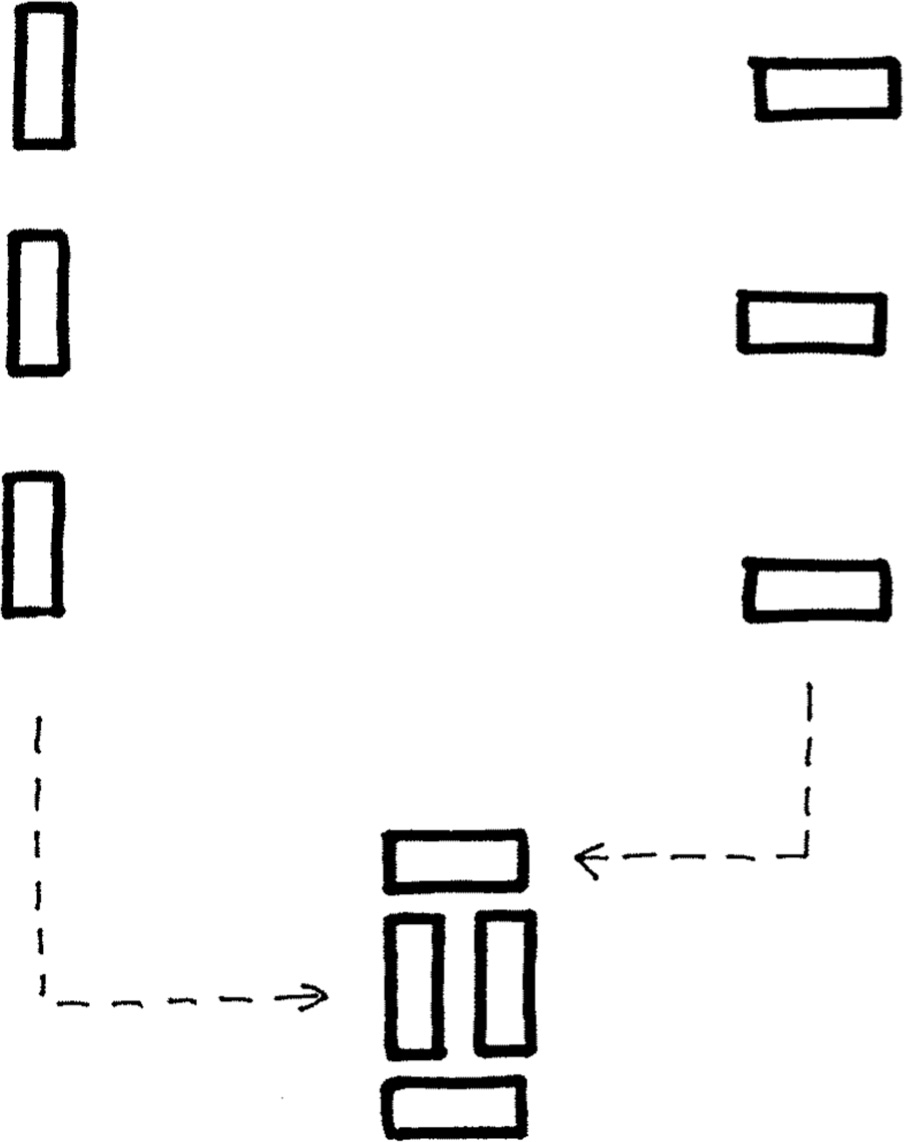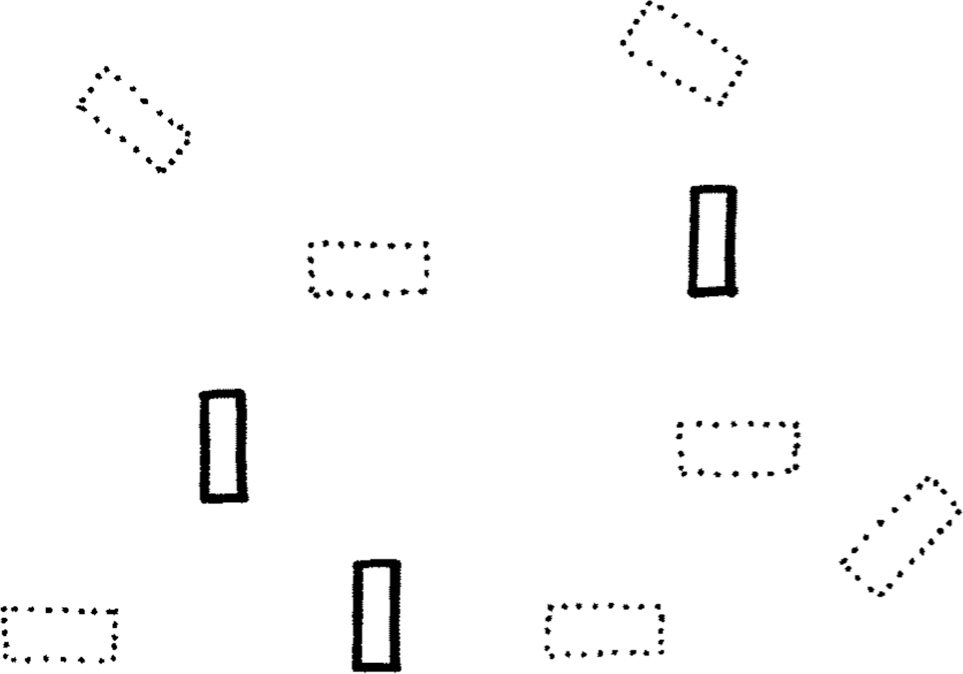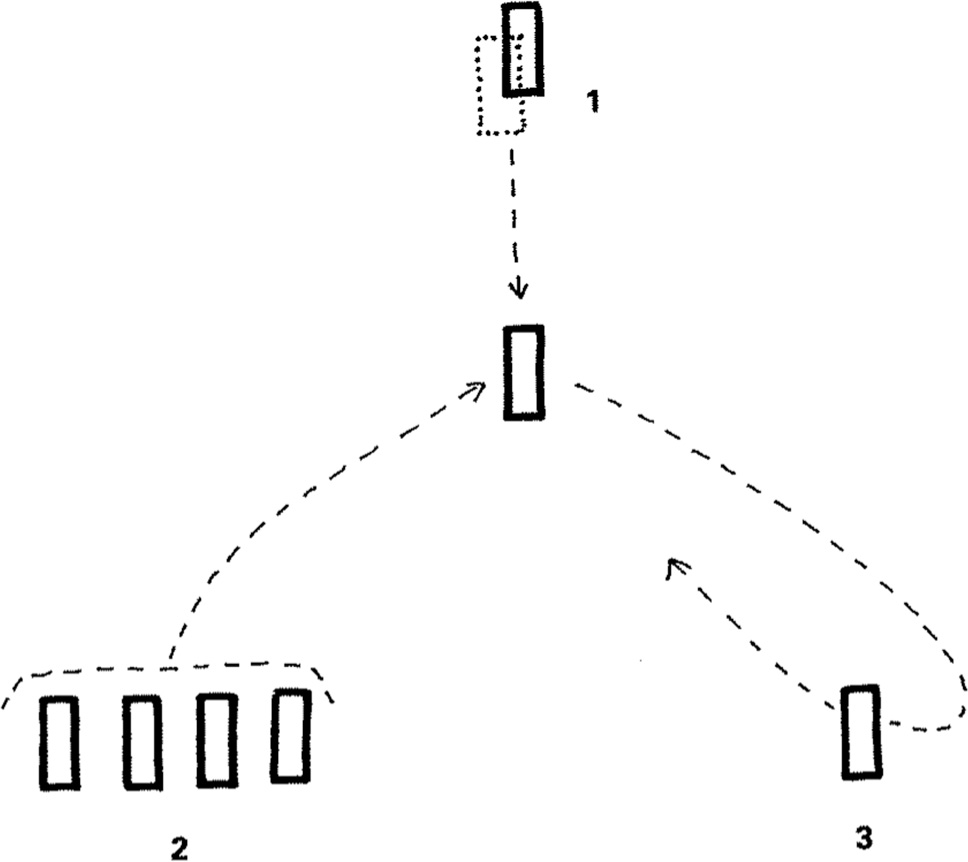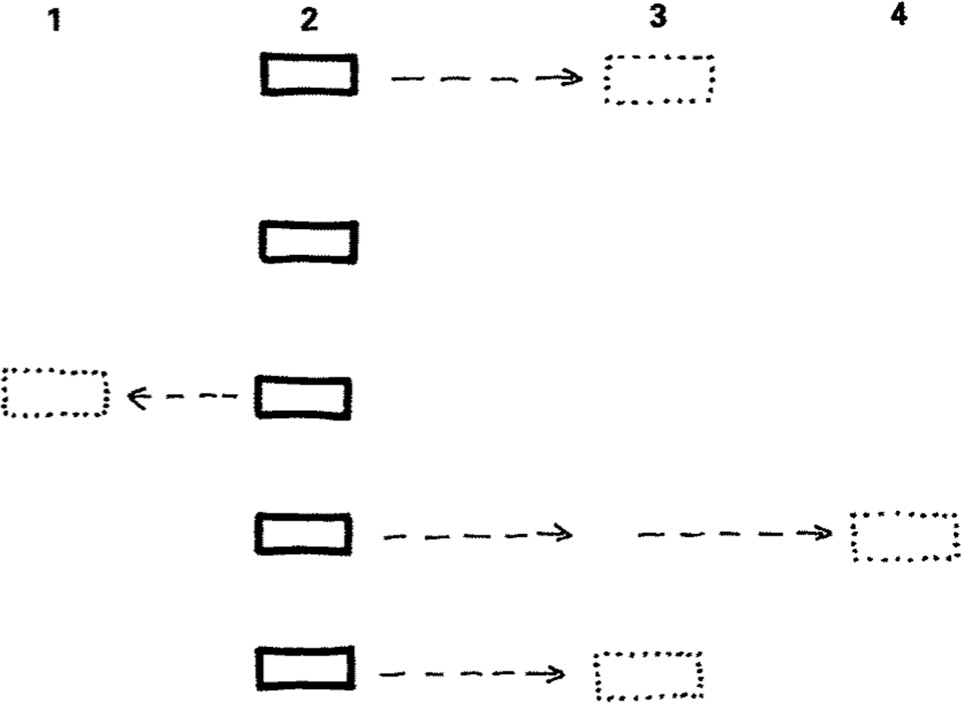VALUES
# 74
The purpose of thinking is to arrange our internal world and external world so as to serve and improve our values. The purpose of action is to put that thinking into effect.
# 75
It is a function of wisdom to be aware of all the different values involved in a situation. It is a function of wisdom to become aware of the different values of the different parties involved in a situation. It is a function of wisdom to have some sort of priority of values so that the most important ones get proper attention. It is a function of wisdom to design action so as to satisfy as many values as possible. It is a function of wisdom consciously to trade off one value against another when both cannot be satisfied.
Wisdom should be the architecture of values. How do we arrange the ‘value space’?
# 76
There are cultural values, local values and family values. These are things we are supposed to do and principles we are supposed to follow. Much of the time we go along with these expectations because such values have indeed become our values or because we fear group disapproval if we do not.

There are spiritual values and religious values. These may be highly personal or more overt. Such values determine whether we feel virtuous or guilty. Such values make decisions easier. We do not judge an alternative on its internal merit but look to see if it fits the appropriate values.
There are material values and ‘achievement’ values. These have a direct value and an indirect one because they may lead to ‘recognition’, ‘power’ and ‘status’, which are also values.
There are less obvious values such as ‘boredom’, ‘interest’ and ‘hassle’.
There are the basic personal values of emotions, feelings, desires and enjoyment.
# 77
The positive values drive our perception and action. These values sensitize the mind and determine how we are going to see things. The smell of food has a higher value if you are hungry.
It is important to realize that values do not just come in during the design of action or at the moment of choice. Values determine how we see things in the first place.
When you are frightened every strange noise is interpreted by perception as a potential problem.
The negative values are the ones we seek to avoid. We seek to avoid pain, discomfort, humiliation, hassle, bad taste, embarrassment, etc.
We seek to avoid insecurity. But we also seek to achieve security. Is security just the absence of ‘insecurity’? The two are not mirror images. We can seek to avoid insecurity. We can also positively seek out security. We can seek to be free of tyranny. But we can also seek more ‘freedom’ as such even when there is no tyranny.

# 78
Where do values come from?
There are supposed to be some innate human values, such as respect for life, love of a child, sense of justice (fairness), spiritual nourishment. These are supposed to be universal. Nevertheless, such fundamental values as respect for life seem to vary from culture to culture. Some of the world’s greatest civilizations were not averse to exposing weak or, sometimes, female children on hillsides to die. In the past in Japan a midwife would wrap an unwanted child in a mat and kneel on it until it expired.
Even countries with a high degree of respect for human life construct powerful weapons of war specifically to destroy human life (in self-defence) and consider it proper to take human life in the justice system.
At some point values are set by religious beliefs. These may be set formally as part of the religious faith and may be adopted by individual spirituality.
There are also values which are temporarily created by clubs, groups or the demands of fashion.
# 79
In my book I am Right, You are Wrong (Penguin Life, 2016), I tell the story of a mother who is wheeling along two young children in a pram. A neighbour stops the mother to admire the children.
‘Don’t bother about them,’ says the mother. ‘You should see the photographs. They are really beautiful.’
In a sense the mother was right. The children would grow up and become bald, wrinkled and paunchy. The photographs would remain beautiful for a very long time.
The purpose of reality is to fuel those myths, stories and beliefs which give value to life. In this respect it is up to us to create values.
A person who takes up a hobby or sets out to collect something is investing in the creation of value. A person who develops a fine taste in wine or an eye for paintings is also investing in value creation.
The person who pays close attention to the taste of the wine is investing in value in a richer experience brought about by a deliberate act of ‘attention directing’. This is as deliberate an act of investment as investing in a company or planting bulbs in the garden or spending hours on some course.
# 80
Values give purpose, meaning, enjoyment and ‘value’ to life. We can also become hostage to our values, just as we can become hostage to our desires.
Excitement is a value and we may become addicted to seeking out excitement. We may become adrenaline junkies and take up bungee jumping.
Even when we do not actively seek out excitement we may be driven by the desire to avoid ‘boredom’, which is a very powerful negative value.
Simplicity is a high value, which we may seek directly, or indirectly through a distaste for complications and hassle.
# 81
It is the task of wisdom to understand values in perception; in the design of action; in making choices and in judgement. What are the values that are driving us? What are the values we shall enjoy at the end? What negative values have we avoided? What value changes have we inflicted on others?

# 82
Some people are so violently seasick that they really wish to die. There seems to be no higher value than getting on to firm land. When they have been on firm land for a day or so they do not go around appreciating the firmness of the land.
When you have a violent headache there is no higher value than an aspirin. When the headache is gone then aspirin has a minor security value.
So there are values of the moment and values that are more permanent.
Any ‘need’ of the moment is a value. If you are thirsty and have a bottle of soft drink but no opener, then a bottle opener has a high value. If you are playing poker and need a certain card to complete a ‘full house’, then that card has high value.
# 83
Not all people have the same needs at the same time. Not all people have the same values. To a union negotiator there is value in the outcome of the negotiation. There is even more value in how his performance is going to look to the union members. An agreement that is reached too early may be less stressful and less financially painful to everyone involved but may give the impression that the outcome was not sufficiently contested. A better deal might have been obtained if more time had been taken in disagreement.
Appearance values are important in politics, in business and in birds. In many bird species the female is attracted to the male purely by looks: a long feather or a bright red breast. There is no question of strength, of speed of wing or of being a good ‘provider’. Appearance is enough. It seems to work well. Birds survive and prosper.

Because different parties have different values, the skill of a negotiator is to seek, through design, to produce an outcome which accommodates as many of the different values as possible.
Negotiation becomes more difficult when one party has as a prime value that the other party must suffer. This deliberate win–lose attitude makes win–win design impossible.
Negotiation should be a design process with new alternatives being put forward. It need not be a matter of pressuring the acceptance of the existing alternatives. Negotiation does not have to be an auction of pain.
# 84
It is said that Napoleon found it cheaper to reward his men with medals rather than with more money. Recognition and honour are powerful motivators. They are powerful values.
When General Electric (USA) once asked its research workers what they wanted most, it was not more money or more time off, it was ‘recognition’ for their efforts and successes.
Considering how cheap this sort of value is to give, it is surprising we do not use it more. It is also one of those values which you can give without in any way diminishing the supply.
There is the very high value of being noticed. There is the high value of ‘being given attention’. It might even be said that ‘love’ in its receiving aspects is no more than an exaggerated form of ‘being given attention’.
# 85
The Italians have a great ‘group culture’. They meet together. They go out to dinner in large groups. Everyone in the group has an accepted and understood position. There is not the jockeying for power or attention that there is in so many other countries. There is in the group the ‘jester’, who is always trying to make people laugh. There is the person who simply contributes by laughing loudly and regularly. There is the person everyone teases affectionately. There is the ‘wise’ guy, who is supposed to know everything. It is like a large family.

There is high value in the sense of ‘belonging’. Youngsters start smoking in order to belong to the ‘gang’. Drugs are tried in the same way.
The English emphasis on ‘class’ and ‘club’ is an excellent device for the protection of mediocrity. If you are stupid you can still belong and will be protected by the others. If you try to be too smart, that is frowned upon because you are setting competitive standards for the others. ‘Showing off’ is not permitted for the same reason. Once you ‘belong’, you are carried along and do not have to make much effort.
Belonging to the gang is important because it is terrible to be left out of any gang; the terror of isolation is real when all action goes through the gangs. You also acquire your identity and your mates by belonging.
# 86
I once suggested (see Handbook for the Positive Revolution, Vermilion 2018) that young women had it in their power to change the values of society. Young men want to show off to young women. Young men want to impress young women. So if young women were to down-value aggression and antisocial behaviour then these types of behaviour would soon go out of fashion.
# 87
Someone with ‘good taste’ finds it very hard to believe that someone else can really have ‘bad taste’. Is it perhaps just an insensitivity or lack of any taste at all?
Aesthetics are intangible but very real values. A scientist has an aesthetic feeling that the explanation is too complex. An ecologist has an aesthetic feeling that the proposed action is going to be damaging to the environment. Politicians are guided by their own aesthetic political sensitivities all the time. Aesthetics in art and architecture are a matter of fashion, culture and, perhaps, some innate properties of the human mind.
# 88
Happiness is not durable. It is there one day but next day it is gone. Anguish is much more durable. You can nurture and polish a ‘good anguish’. It will not let you down. Hatred gives a permanent focus and mission to life. The emotion is even enjoyable.
Love is a general value stimulator. Love makes food taste better, your neighbour more tolerable and the sun shine brighter.
# 89
It is part of wisdom to know that logic never changes love.
Logic never changes any emotion or feeling. You can spend hours with logical argument trying to change some feeling or prejudice. You are not likely to succeed.
But perception can change feelings and emotions. If you put forward a ‘possible’ way of looking at the situation, then perception can change and with it the feeling. If it is suggested that someone is ‘trying to make you jealous’ because he or she loves you, then you see the flirtatious behaviour differently.
So where do feelings come in? If you start off with an emotion, that will fashion your perception and limit it. If your perception triggers an emotion, then that will also limit your perception. Feelings should come in at the end in order to judge the situation or help design the appropriate action.
In a normal argument or discussion you are not supposed to allow your feelings to come in because argument is all about objective logic. Of course, feelings come in anyway – you just disguise them as logic.
Because feelings and intuition are so important a part of thinking, the Six Hats method, which is now so widely used around the world (see Six Thinking Hats, Penguin Life 2016), allocates the ‘Red Hat’ to the expression of feelings. When the Red Hat is in use everyone is free to express his or her feelings without justification and without apology.
There is a value in having feelings and a value in having them known.

# 90
There is a table with three glasses on it. One is a glass of milk. One is a glass of beer. One is a glass of orange juice. If you have very bad eyesight and can only see the table as a blur then you cannot exert your values in choosing the drink you want. If you put on spectacles and improve your eyesight then you can see all three glasses and you choose according to your value.
That is what the CoRT thinking lessons, now widely used in schools, are designed to do: improve perception so youngsters can apply their values (see page 32).

1. Innate and basic human values.
2. Values set by groups and cultures.
3. Belief-based values.
# 91
Wisdom is very much concerned with values in the following ways:
Awareness
There is a need to be aware of all the different values involved in the situation. There are the values of the acting parties and also the values of those likely to be affected by the action. There are the obvious values and the ones you have to search for. You need to have in mind a wide range of ‘positive values’ in order to recognize them. It is like birdwatching. You will not recognize that bird unless you have had previous experience with that shape. That is why this section has laid out various value possibilities. Values do not declare themselves. You have to notice and attend to them. There are the positive and negative values. There are the values that ‘drive’ the situation and there are the values that are used mainly for ‘assessment’. A wise person is able to develop a good value ‘map’.
Important Values
Not all values are equally important. Some are ‘essential’ and some are ‘luxury’ values. It would be good to have the luxury values but there is an absolute need to have the essential values. For example, in some cultures it is an essential value that a negotiating party does not ‘lose face’. Between the two extremes of essential and luxury there is a spectrum. There is skill in deciding where the other values are placed along this spectrum.

Design
Values are the essential drivers of design. The purpose of the design is to serve the values. It is no use designing a bed that is not comfortable to sleep upon. Your design may start by following the thrust of some key values. Then you seek to modify the design to accommodate other values. There are different ways in which values can be fed into a design. It is not possible to have all the values operating at every stage.
Reconcile
How can competing values and contrary values be reconciled? This may apply to your own thinking and almost always applies in negotiation. There is a great need for creative design in reconciling values. It has to be a creative process. Analysis and judgement will never achieve such reconciliation. They are concerned with the superiority of one value over another.
Trade-off
When design has not succeeded in reconciling different values or accommodating different values there may have to be a ‘trade-off’. In buying a car, you may have to decide between ‘appearance’ and ‘fuel consumption’ because there are no good-looking cars with a low fuel consumption. Trade-offs should always be conscious. It is never a matter of ignoring, neglecting or discarding a value. There should be a conscious decision to give up one value in exchange for another one (trading).
Assessment
Values come directly into play in our choice of car, partner, course of action, strategy, etc. Part of our assessment is based on whether the suggestion will work at all, part on the cost and investment needed. The rest is on the ‘fit’ between the suggestion and our needs and values. When a choice or decision has been made it is useful to spell out the reasons behind that choice or decision: ‘I have made this choice because …’
You may find that the actual value driving the decision is not a key value at all. For example, you may make a major decision ‘in order to avoid upsetting’ someone. That is the edge effect in action.
Prediction
Values are a key part of prediction. If you want to know how some person or some party is going to act, then you need to know the driving values. If you want to know how some suggestion is going to be accepted, then you need to know the driving values. If you want to know how things are going to develop in the world, you need to have some idea of the driving values.
Changing Values
Values change. Some values come into fashion, others die out. It is important to be aware of the changing values.
Wisdom is a matter of knowing what the values are, how to cope with them and how to use them.
# 92
A simple way to sort out values is to draw four broad columns. In the second column you write down all the values you can think of in the situation. This includes positive and negative values, personal and ‘other people’ values.
You now go down the list and transfer to the first column all the values that are peripheral or unimportant.
You now go down the list a second time and transfer to the third column the ‘more important’ values.
Finally, you go down the third column and transfer to the fourth column what you consider to be the ‘essential’ values.
Now look over all the columns and see if they make sense. Make adjustments as required.
